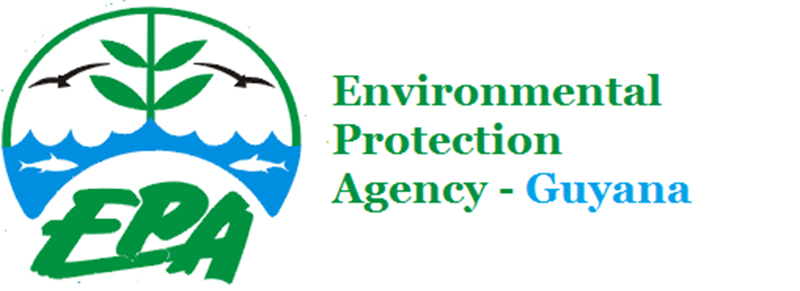The Environmental Protection Agency (EPA) is now explaining to the public the reason for its decisions to exempt projects from impact assessments.
The recent move would be seen as a win for environmentalists who have been pressuring the agency to uphold the law and provide reasons for its decisions on not requiring Environmental Impact Assessments (EIAs).
“The EPA having screened the applications has determined that they will not significantly affect the environment and therefore are exempt from the requirement to conduct an EIA, as set out in Section 11 of the Environmental Protection Act, Cap.20:05…the reasons for our decision are available at the following links on our website,” a notice said in the Guyana Chronicle on November 4th.
Listing projects ranging from the operating of bunkering activities within Guyana’s waters to the construction of hotels and housing schemes, the EPA now provides a link to its website where it justifies the EIA exemptions.
“The EPA’s screening concludes that there are no significant environmental impacts from the operation of the two bunkering vessels. Any environmental impacts related to air, noise, water, and biodiversity in the vessels’ area of operation would be minor, localized, and mitigable. The vessels have been in existence and operating for a number of years, these impacts would therefore be neutral to low. The main potential impact is contamination of water way and changes to local ecosystem due to spills during transfer of fuel and/or from grounding or collisions during transport and fires. Spills may occur in some circumstances and may result in short term change to ecosystems,” the agency stated of the bunkering operations of Kushial Dat – Sealand Marine- (Marine Patriot) and Dhanmattie Kunjbehari -SDR Petroleum Inc.
“However, the probability is low. The consequence of any spill would be minor to moderate as it is unlikely that there would be any measurable changes at the ecosystem level, since the vessels are double hull and measures in place to manage spills,” the reason for the bunkering exemption states alongside a brief summary of the project.
“The vessels also possess Ship-to-Ship Fuel Transfer Plan, an Oil Pollution Emergency Plan (SOPEP), and trained crew to respond to any accident and spill scenario. The Vessel is certified by the Surveyor of Ships appointed by Government of Guyana and in keeping with ANNEX 1 of MARPOL73/7. Measures to effectively minimise and mitigate spill stipulated in the SOPEP, includes but not limited…,” it added while listing a number of mitigation measures.
It is after its explanation that the agency concludes that there are no significant impacts resulting from the bunkering operation of the two vessels.
Environmentalists have recently pilloried the agency’s exemption stance on projects such as the Demerara Harbour Bridge and some persons have appealed to the body adjudicating appeals against EPA: the Environmental Assessment Board (EAB).
Last month, the EAB suddenly announced that hearings of the appeals of the EPA decisions not to require EIAs for the bridge project and a 12-well exploration and drilling in the offshore Canje Block by Exxon’s subsidiary Esso Exploration and Production Guyana Limited (EEPGL) had been put on hold until further notice. The EAB said that this was done for the EPA to provide more answers.
Environmentalist Simone Mangal-Joly had written to the EAB pointing out that Section 11(2) (a) of the Environmental Protection Act requires that the EPA provides the technical reasons for its decisions at the time that it publishes a decision on whether an EIA is required, and that it provides 30 days from that time for the public to properly assess the reasons and appeal the process if necessary. In addition, Section 11(1) (iv) also provides that the EPA publishes a non-technical summary.
She had told the EAB that while the hearings were planned she noted that neither of these requirements had been met.
Following that missive, Mangal-Joly had also stressed the need for fair and prejudice-free hearings of matters.
“I trust that the EAB will take into consideration all matters concerning fair and equitable hearings raised here and by appellants in other cases and strive for public hearings free of any form of prejudice against the public, specific appellants, and the EPA,” she wrote to the EAB.
She added that public hearings should afford unfettered public access and should not in principle limit any member of the public from contributing to the proceedings. She also contended that an EAB public hearing must be based on the information that was available to the EPA at the time that it made its decision.
“Permitting the EPA to bootstrap its case in between the time of its decisions and the time of the EAB’s hearings is a clear violation of the law and professional code of ethics and would make the EAB complicit in reckless and dangerous conduct when it comes to the sacred duty of safeguarding our health and country’s natural assets”, she said.






